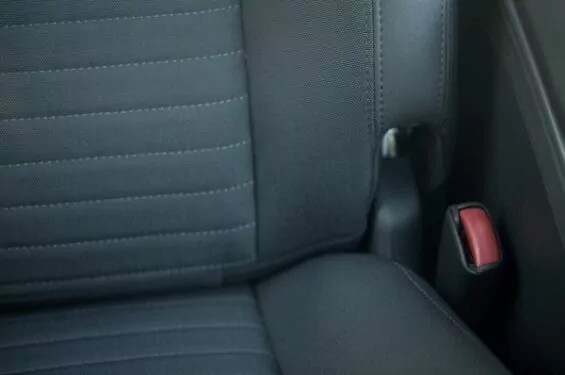Torn car upholstery can quickly diminish the appeal of your vehicle’s interior. Even a small rip or burn can detract from an otherwise pristine cabin. Before you consider expensive seat covers or professional reupholstery services, explore these straightforward and budget-friendly methods to restore your car’s interior yourself.
1. Evaluate the Upholstery Damage
The first crucial step in car upholstery repair is to thoroughly assess the extent of the damage. For leather upholstery, significant damage like large holes or extensive tears might be beyond DIY repair. Similarly, if the damage affects seat belts or other safety components, it’s imperative to consult a professional for safety reasons. DIY repairs should not compromise the vehicle’s safety features.
While you can effectively mend tears and holes yourself, it’s important to manage expectations. DIY repairs may not achieve a factory-new finish. If the damage is in a prominent area or if you plan to keep your car long-term, professional repair might be a worthwhile investment for a seamless result.
 repair car upholstery
repair car upholstery
2. Mending Tears in Cloth Upholstery
For fabric car seats, repairing tears can be surprisingly simple. For straightforward tears, a curved upholstery needle and heavy-duty upholstery thread are your primary tools. Select a thread color that closely matches your car seats for a less visible repair. If you’re new to sewing upholstery, practicing your stitching technique on a spare piece of fabric beforehand is advisable to refine your approach.
Once you’ve meticulously stitched the tear closed, apply a fabric sealant along both sides of the repaired seam. This sealant is crucial to prevent fraying and ensure the longevity of your repair, reinforcing the stitched area against future wear and tear.
3. Patching Holes in Car Seats
Repairing holes in cloth car seats, especially those smaller than two inches, is also a manageable DIY task. Common culprits like cigarette burns or pet damage can often be effectively addressed with heat-activated fabric interfacing. Begin by sourcing a fabric patch that closely matches the color and texture of your existing car upholstery to ensure a cohesive look. You’ll also need fabric adhesive, readily available at craft stores.
Measure the hole and cut a fabric patch slightly larger to allow for overlap. Ensure the patch has clean, even edges, ideally square, for a neat finish.
Cut a piece of fabric adhesive larger than the hole itself. Carefully tuck the adhesive into the damaged area, positioning it beneath the existing upholstery. Place the fabric patch directly over the hole, aligning it carefully. Following the adhesive manufacturer’s instructions, use an iron to apply heat to the fabric patch. The heat will activate the adhesive, bonding the patch to the underside of the upholstery and effectively sealing the hole.
4. Restoring Scratches on Leather Car Seats
Leather car upholstery requires a different approach compared to fabric. Minor scratches on leather seats, however, can often be improved with a quality leather conditioning cream. Apply the cream to the scratched area and gently buff it in using a soft cloth. This can help to moisturize the leather and reduce the visibility of superficial scratches.
If the conditioning cream alone isn’t sufficient, consider using a small amount of spray lacquer specifically designed for leather repair. Apply it sparingly to the scratched area, following the manufacturer’s instructions meticulously. Remember, patience is key. It’s better to apply thin coats gradually to achieve the desired result and avoid over-application.
Another resource for leather repair solutions could be your car dealership. They may offer repair kits specifically formulated for your car’s interior leather, ensuring a compatible and effective repair.
Regular cleaning is also essential for maintaining leather seats, regardless of scratches. Simple cleaning methods using readily available items can significantly improve the look and feel of your leather upholstery, keeping it supple and preventing further damage.
